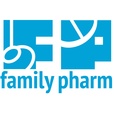
Summary: The CHADS2 and HAS-BLED predictive index are useful in assessing a patient’s thromboembolic risk and in predicting which antithrombotic therapy is most suitable; and that is either aspirin, clopidogrel, or anticoagulants. The 3 new anticoagulants may be simpler to use and may have less intracranial hemorrhage side effect than warfarin, there has been longer clinical experience with warfarin and an antidote is present if needed. As for rate control and rhythm control, there is no significant difference in controlling survival and mortality between the two. Therapy is chosen based on patient’s symptoms and preference. Rate control medications include BB, non-dihydropyridine CCB, and digoxin. And rhythm control includes dronedarone, flecainide, sotalol, and amiodarone. We will go over details of these medications in the next episode. Catheter ablation is mainly for symptom control. It may be first line for highly selected patients, is often considered 2nd line after multiple drug therapy, or for patients who failed on multiple antiarrhythmic therapy and maintenance of sinus rhythm is still desired. Focused 2012 Update of the Canadian Cardiovascular Society Atrial Fibrillation Guidelines: Recommendations for Stroke Prevention and Rate/Rhythm Control http://www.onlinecjc.ca/article/S0828-282X(12)00046-3/fulltext The 2012 Canadian Cardiovascular Society Heart Failure Management Guidelines Update: Focus on Acute and Chronic Heart Failure http://www.onlinecjc.ca/article/S0828-282X%2812%2901379-7/abstract Canadian Cardiovascular Society Atrial Fibrillation Guidelines 2010: Catheter Ablation for Atrial Fibrillation/Atrial Flutter http://www.onlinecjc.ca/article/S0828-282X(10)00012-7/fulltext
